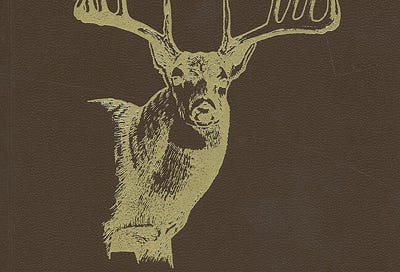By Joe Servello
By now most deer hunters are familiar with the Boone & Crockett scoring system. It is the standard by which most whitetail record keeping is done. It all began with Theodore Roosevelt in 1887 when he established the Boone and Crockett Club. Initially the club was made up of outdoor sports enthusiasts, scientists, military and political leaders, explorers, artists, writers and industrialists who's main concern was wildlife conservation and a system for wildlife and land management. They championed the idea of "fair chase" or the ethical pursuit of free ranging wild game and helped establish many of the conservation and wildlife programs we have today. It was not until 1932 that the first records book emerged. In 1949 the existing scoring system was revised and became the scoring system we know today.
Dispite the systems longevity as the oldest and first scoring system, it sometimes recieves heavy criticism for not just recording total inches of antler and focusing more on symmetry. I will try to explain in this article why the Boone and Crockett system is the better way to rank whitetails and the motivation behind scoring this way. I am going to say some things that might not be popular amongst some hunters when it comes to ranking whitetails and establishing a recordbook.
First and foremost, scoring and keeping whitetail records is not, and never has been, about the hunter. The rankings are not designed to be a competition where a bucks score is somehow related to the hunters prowess as a hunter. In fact, many of the bucks in the record book are a product of the hunter being in the right place at the right time and has little to do with his or her hunting ability. The hunter is just a means to an end and necessary in order to get access to the trophy buck.
The record keeping and scoring system was designed to find the best examples of a mature, free range, whitetail buck. This changes the criteria from just greatest inches of "horn" to the biggest most typically symmetrical measurement. If you look at two deer of the same score, the more symmetrical will always be the more impressive.
Then there is always those that think the spread measurement should not be a part of the scoring system. But again, If you were looking at two bucks whose right and left antlers measured exactly the same with one having a 20" spread and the other a 14" spread, the 20" buck would be the more impressive looking of the two. That is why in some cases the total inches of horn doesn't necessarily give you the biggest or more impressive buck, and certainly not the best example of the perfect adult whitetail buck.
Obviously, we must take into account that there are many non-typical racked bucks that are quite impressive, some even jaw dropping. So, a category was set up for the scoring of non-typicals were symmetry is not the goal and the buck is rewarded for having more abnormal points. But even then, the buck is still scored the same as a typical, only the abnormal points are added to the score instead of substracted. The normal deductions for differences between the two sides are still subtracted.
Understanding how the B&C system actually works best for determining the most impressive example of a whitetail buck is easy if you look at it logically. The world record typical scores just over 200 inches. The world reord non-typical is over 300 inches. If you were to take and add the extra 100 inches to to the typical buck as typical inches, for example, a G5 or G6 tine, longer beam length, thicker circumufrence measurement, wider spread or a combination of any or all. The size and impressiveness of that 300" typical would be jaw dropping in comparison to the non-typical of the same score. The typical would need to sport over 30" beams, 15"-20" tines, 5"-6" curcumferences all the way up, and a 20"-24" spread just to get to 300 inches as a 10 or 12 point. When you see it in that perspective it is easy to understand that the B&C scoring system is a good indicator of a top trophy buck and does the best job of ranking based on overall impression.
Unfortunately there are some that like the bigger number you get from a gross score or total inches of horn. It's the old "My buck is bigger than yours" mentality. Which would be fine if the reason for scoring a buck was a competition where the greatest number wins, but scoring is intended to rank the best and most impressive examples of a mature free range whitetail buck. The hunter is not being ranked, and the score of your buck has no bearing on how good of a hunter you are. It does however reflect where your buck ranks among other deer and how close it is to the ultimate example of an exceptional mature whitetail buck.
Keeping a record book of these bucks has given us the opportunity to see bucks from throughout the years that we may never have seen. When you look at it as being about the buck and not the hunter it is easy to see the value of keeping records and preserving those bucks through history for us hunters to enjoy.
If you enjoyed this article and would like to see more, please consider supporting me by purchasing a paid subscription for just $5 a month and sharing my content with your friends. Thank you.





